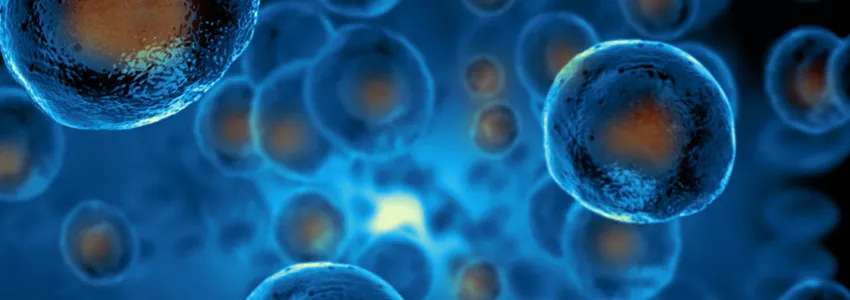
Photo by Giovanni Cancemi, Shutterstock.
Stanford Medicine Scope - May 21st, 2018 - by Krista Conger
I write a lot about adult stem cells — those that hang out in tissues like muscle or skin until damage or trauma stimulate them to activate and begin making replacement cells. All too frequently researchers and scientists talk about stem cells as if they exist in a vacuum. In real life they're not just clumps of cells in a laboratory dish, they are members of a vibrant community of neighboring cells, connective tissue and extracellular molecules that signal cells to grow or stay put.
In the past decade, researchers have begun to realize that it's not only possible to duplicate some of the stem cells' neighborhood with biomaterials — synthetic materials that have been engineered to interact with a biological system — but also that the biophysical properties of these adoptive digs, such as their stiffness or three-dimensional shape, can dramatically affect the cells' function.
For example, I've written before how artificial muscle fibers serve as a bioscaffold for muscle stem cells. In 2010 microbiologist and immunologist Helen Blau, PhD, and her colleagues demonstrated that muscle stem cells quickly lose their regenerative potential when cultured on rigid plastic dishes, but maintain their stem-cell state when cultured on soft hydrogels that are similar to native muscle tissue.
Understanding these nuances is a key step in learning how best to grow stem cells in a laboratory for future therapies, or to uncover the reasons behind certain disease processes. Recently Blau, and postdoctoral scholar Christopher Madl, PhD, together with Sarah Heilshorn, PhD, in Stanford's Department of Material Science and Engineering have summarized the state of the field in Nature, and pinpointed some key ways in which bioengineering advances may enhance the development of stem cell therapies by more closely mimicking the cells' natural environment, both in health and disease.
As Madl explained to me in an email:
Stem cells are constantly receiving inputs from their surroundings and using those signals to determine how to behave: Should they stay as they are, or proliferate to generate more stem cells, or differentiate into mature cell types? These signals allow stem cells to appropriately respond to injury to repair damaged tissue.
However, disease states can also provide signals that result in stem cell dysfunction. For instance, both aging and disease can result in fibrosis, which is characterized by a stiffening of the tissue. We know that stem cells can sense these changes in stiffness, which may then impact their ability to function correctly.
The article explores ways that advances in bioengineering might help scientists keep stem cells from differentiating inappropriately and continue dividing robustly. It could also better guide tissue regeneration after transplantation. It's an exciting sneak peek into a future that may one day even allow the growth of entire organs in the laboratory for study or clinical use.
As Blau explained:
In order to realize the full potential of stem cells to treat disease as a cell therapeutic or to model disease in a dish for drug discovery, it is necessary to develop optimal culture methods to preserve and enhance their function. So being able to fabricate biomaterials that mimic the tissue rigidity changes that accompany disease and aging is crucial.
One day we may even be able to recapitulate the dynamics of changes in tissue rigidity in real time and monitor how the cells respond as this process is occurring, rather than obtaining snapshots of the process based on cells on a material of a given fixed rigidity.



